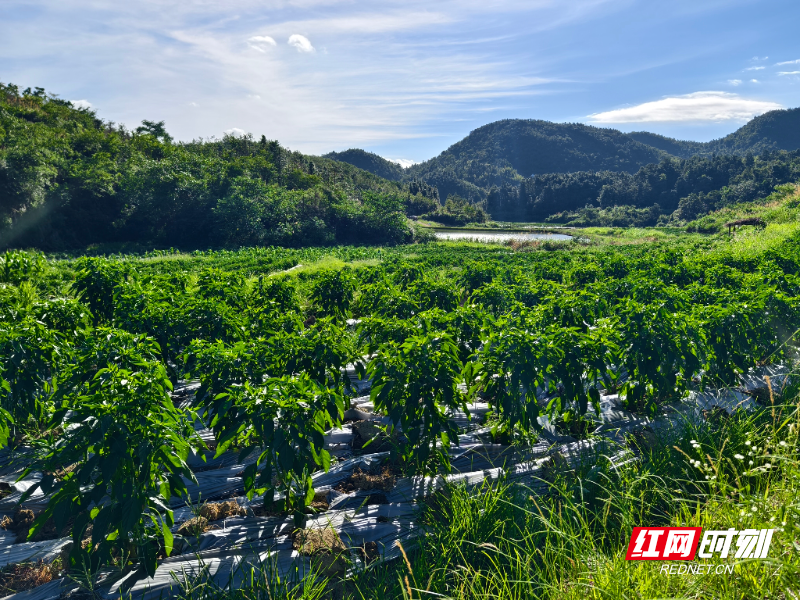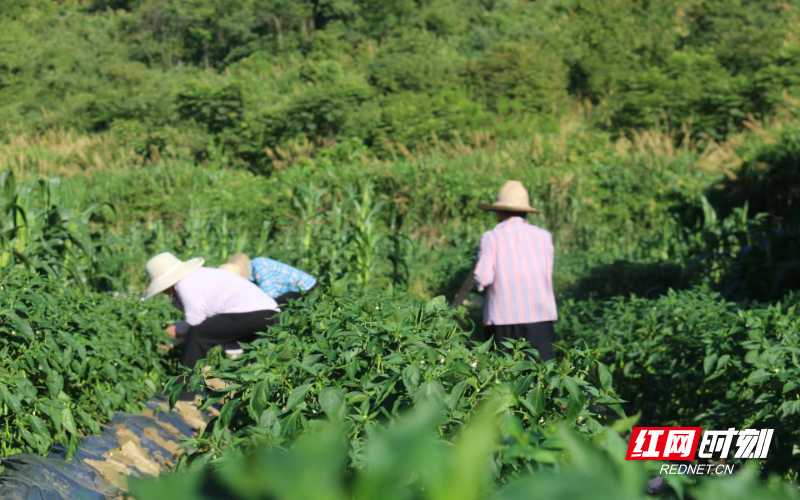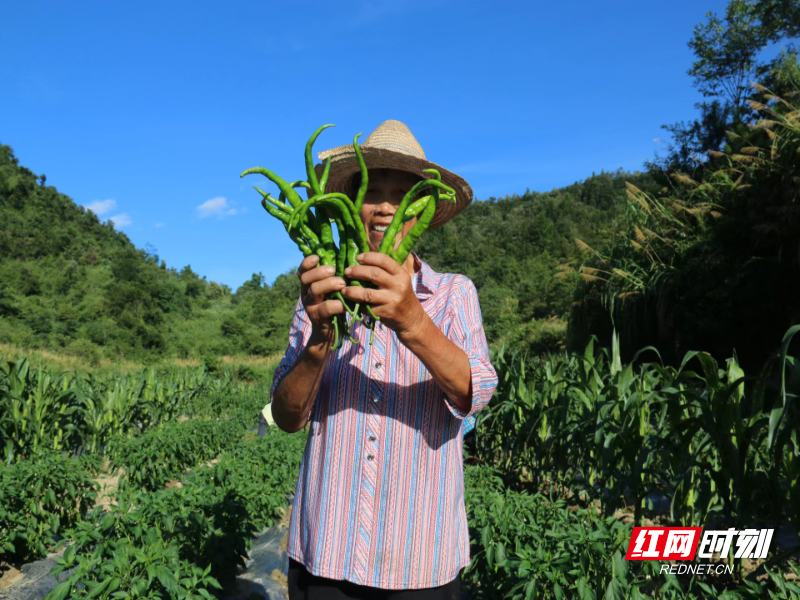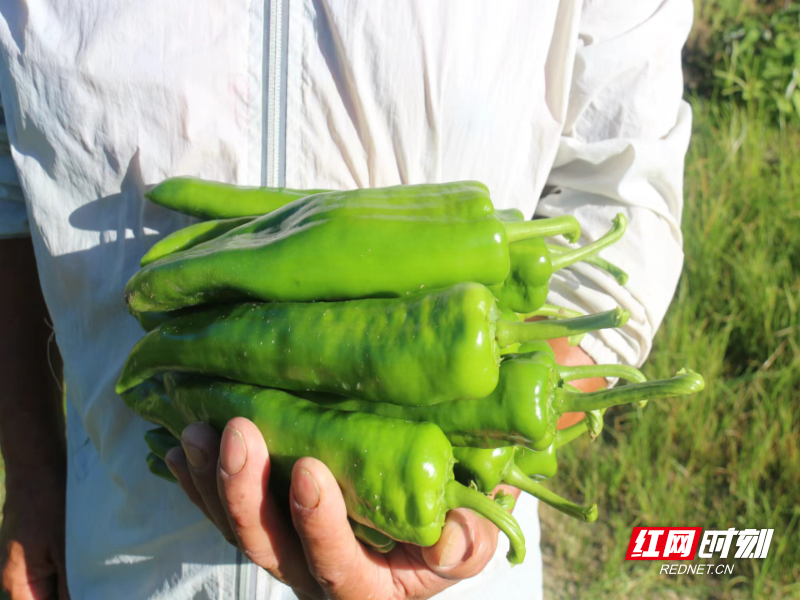Beiji chili peppers welcome bumper harvest
2024-07-20
It’s now time to harvest chili peppers. Chili peppers have been on the market for a long time in various regions, but the branch farm in Chatian Village, Xingning Town has just welcomed its first harvest.

Li Xiongxian, the village secretary, said happily, “Due to the high altitude, low temperature, large temperature difference, fertile soil and good soil quality, our village has a long history of chili pepper cultivation, and the time when chili peppers are on the market is basically different from other places, so the overall economic benefits are better.”

Chatian Village is located in the original Beiji Area of Xingning Town, with an altitude of over 500 meters. The surrounding vegetation is good, and the temperature difference between day and night can reach about 20 degrees Celsius.
It belongs to the monsoon humid climate zone that transitions from subtropical to subtropical regions. The soil is mainly mountainous yellow soil and yellow brown soil, with loose soil, high fertility, and good permeability, which is conducive to the coloring of pepper fruits and the accumulation of nutrients.

Beiji chili peppers here have bright color, thin skin, and thick pulp with a moderate spiciness, which are highly favored by consumers.
Now, it’s the initial harvesting period of the Beiji chili peppers. They can be harvested until early November. One mu (about 0.067 hectares) of land can produce 3,000 kg of chili peppers. It’s expected that the total output this year will be about 150,000 kg. Based on the current market price of over 2 yuan, the estimated output value can reach over 700,000 yuan.

Chili pepper is an efficient agriculture and a labor-intensive industry. Each link requires much labor from seedling cultivation, planting, management and protection to picking, which can bring a lot of job opportunities to villagers.

In recent years, Xingning town has worked to optimize the agricultural industrial structure, developed characteristic industries such as Beiji pepper according to local conditions, and vigorously promoted large-scale planting. Efforts have been made to develop the town into a large-scale, standardized and demonstrative vegetable town, which will drive more villagers to become rich and promote rural revitalization.




